I recently saw a recipe for Vanilla Dreams on the King Arthur Flour site. What intrigued me about the recipe was that it used Baker’s Ammonia, a.k.a. Ammonium Carbonate, in place of baking powder.
From what I could find, the Baker’s Ammonia is a secret ingredient used by bakeries to produce extra crisp cookies. It is also used in traditional recipes such as Speculoos and Lebkuchen from northern Europe and Scandinavia.
Before using the Ammonium Carbonate, I consulted with the Master Taste Tester whom I also refer to as Mister Wizard because of his extensive scientific background. He said that the Ammonium Carbonate would likely have a strong ammonia smell that would dissipate when heated in the oven and decompose into, among other things, ammonium bicarbonate. The baking powder contains sodium bicarbonate. He thought that each would likely produce a different taste and texture. During his explanation, Mister Wizard did comment that he was going to send me on both a chemistry and a physics course!
Armed with this knowledge and shamed by what I recalled (or didn’t) from my university chemistry and physics courses, I decided to conduct an experiment making two batches of cookies with the only variable being Ammonium Carbonate versus baking powder. To do this, I cut the King Arthur recipe in half, and used the Ammonium Carbonate in one half and baking powder in the other half.
Ingredients
I used the following ingredients for the Vanilla Dreams: Unsalted butter, granulated sugar, vanilla extract, fine sea salt, Ammonium Carbonate (on the left) and baking powder (on the right), and all-purpose flour.
Making the Vanilla Dreams
In what follows, the recipe using Ammonium Carbonate is on the left; the recipe using baking powder is on the right. For both recipes, I beat unsalted butter with the sugar on high speed until it was creamy.
I added the Ammonium Carbonate and salt to the vanilla extract, and gave the mixture a stir before adding it to the butter/sugar mixture. I can definitely attest to the fact that the Ammonium Carbonate did have a very strong ammonia smell. For the other batch, I added the vanilla mixture and the vanilla extract, salt and baking powder to the butter/sugar mixtures.
After beating the butter/sugar/vanilla mixture to ensure that everything was well combined, I added the all purpose flour, and beat each mixture until the flour was incorporated. The mixture seemed quite dry, but eventually came together into a shaggy dough.
I partitioned the dough using a #30 ice cream scoop. For reference, the ice cream scoop had a 1-inch diameter and held two teaspoons, or 13 grams. Because this was an experiment, I actually weighed each piece of dough – each ball of dough weighed 13 grams.
I rolled each piece of dough into a ball, placed it on the parchment lined baking sheet, and flattened it to about ⅜-inch. I used the food pusher from my food processor to do this. It not only had a circular design on the bottom, but also resulted in the perfect amount of flattening.
Into a 300° F oven the cookies went for about 20 minutes, until they were lightly browned around the edges.
I transferred the cookies to a wire rack to cool completely.
Now came the moment of truth: Did the use of Ammonium Carbonate produce a cookie that was different in texture and/or taste from the one using baking powder? The answer is yes. The cookies made with the Ammonium Carbonate were a bit flatter, had small holes on the surface (presumably because of the release of the gases), were more crispy, and had an overall better taste. Interestingly, the cookies made with the baking powder had a very salty taste, even though I used exactly the same amount of salt in each of the recipes. Mr. Wizard thought that the cookies made with the Ammonium Carbonate were significantly better, and said that the salty taste from the others likely resulted from the sodium bicarbonate in the baking powder. I baked each recipe in two batches. The first batch of the baking powder cookies were a bit thicker than the second batch as can be seen in the above picture on the right. The circular pattern resulting from the flattening of the cookies disappeared in both recipes.
To dress up the baking powder cookies, I decided to top each with melted chocolate and roasted pecans. The ingredients for the chocolate dip included semi-sweet chocolate chips, vegetable oil, and roasted pecans.
I added the oil to the chocolate chips and microwaved them in 30-second intervals until they were almost melted. The addition of the oil helps the chocolate to set as it cools.
I used an off-set spatula to spread the chocolate on the bottom of each cookie, and then dipped the cookie in the crushed pecans.
I placed the cookies on a wire rack to allow the chocolate to cool completely.
The addition of the chocolate and nuts definitely complimented the salty taste of the baking powder cookies, and produced an incredible cookie – much better than the very expensive supermarket cookies that come in the white bag. The cookies made with the Ammonium Carbonate were outstanding all by themselves. Yum!
If you’d like to try some other chocolate dipped cookies, check out my Almond and Chocolate Sandwich Cookies or Chocolate Dipped Potato Chip Cookies.
I hope you liked this recipe for Vanilla Dreams as much as I do. If so, please consider rating it and leaving a comment. Also, if you’d like to receive notifications of new posts by email, enter your email address in the Subscribe box.
Thank you so much for visiting Pudge Factor. I hope you’ll come back!
Recipe
Want to Save This Recipe?
Enter your email & I’ll send it to your inbox. Plus, enjoy weekly doses of culinary inspiration as a bonus!
By submitting this form, you consent to receive emails from Pudge Factor.
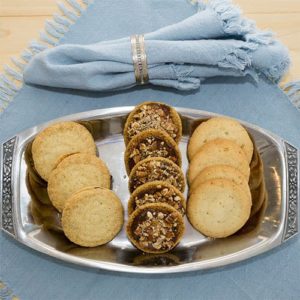
Vanilla Dreams – The Experiment
Ingredients
Cookie:
- 1 Tablespoon vanilla extract
- ¼ teaspoon baker's ammonia or 1½ teaspoons baking powder
- ¾ teaspoon fine sea salt
- 1 ¼ cups (8.75-ounces, 248 grams) granulated sugar
- 1 cup (8-ounces, 227 grams) unsalted butter, room temperature
- 2 cups (8.5-ounces, 241 grams) unbleached all-purpose flour
Chocolate Dip:
- 1 cup (6-ounces, 170 grams) semi-sweet chocolate chips
- 1 ½ teaspoons vegetable oil
- 1 cup (4-ounces, 113 grams) roasted pecans, crushed
Instructions
Cookie
- Preheat the oven to 300°F. Lightly grease (or line with parchment) two baking sheets.
- Combine the vanilla, baker's ammonia, and salt in a very small bowl. Stir to dissolve the ammonia; the salt won't fully dissolve. Combine the vanilla mixture with the butter and sugar, and beat until smooth. (If using baking powder in place of the baker's ammonia, add the vanilla extract, baking powder and salt to the butter and sugar, and beat until smooth.) Mix in the flour; the mixture will seem quite dry at first. Continue beating until the dough comes together.
- Break off pieces of dough about the size of a shelled chestnut (about ½ ounce, 13 grams); a teaspoon cookie scoop works well here. Roll the pieces into balls. Space them on the prepared baking sheets, leaving 1-½ inches between them. Use the bottom of a glass, dipped in flour or sugar if necessary to prevent sticking, to flatten the balls to about ⅜-inch thick. If you have it, use the end of the food pusher from a food processor to flatten the cookies; many of these have a circular, ridged pattern on their end, which imprints the cookies with a nice design.
- Bake the cookies at 300° F until they're a very light golden brown around the edges, about 20 to 25 minutes. Remove cookies from the oven, and transfer them to a rack to cool. Yield: About 4 dozen cookies.
Chocolate Dip
- Crush the pecans finely, either by putting them in a ziploc bag and pounding, or in a food processor. Combine the chocolate chips and vegetable oil in a microwave-safe cup. Microwave in 30 second intervals until the chocolate softens; then stir to completely melt.
- Using an off-set spatula, spread the bottom of each cookie with chocolate. Dip in crushed nuts. Place cookies, chocolate-side up, on a piece of parchment or wire rack to set.

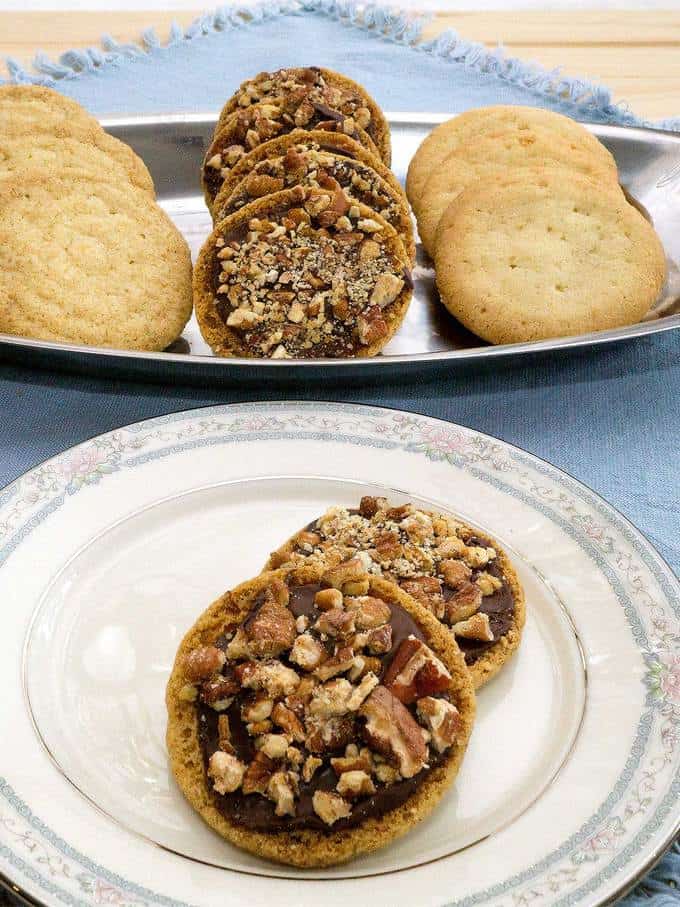
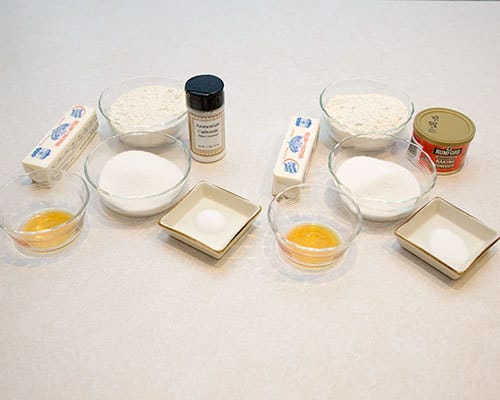
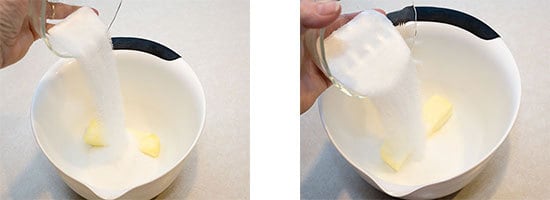

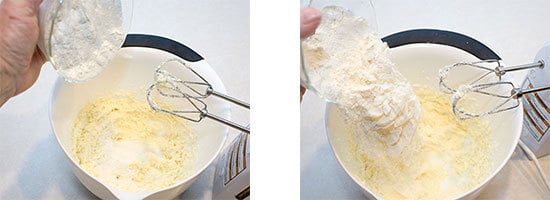
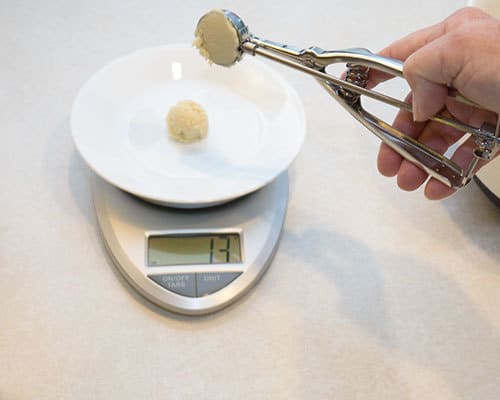
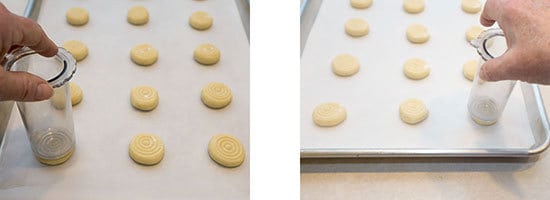
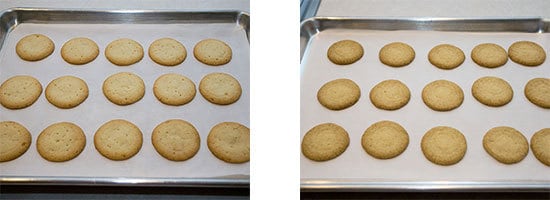
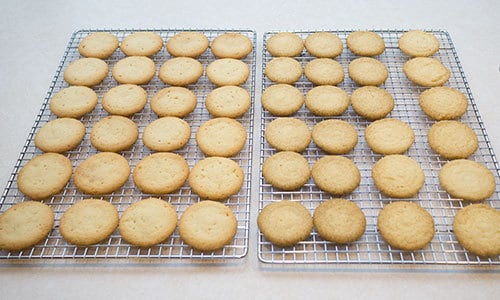

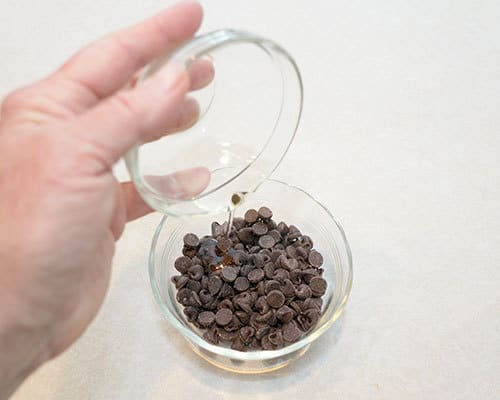
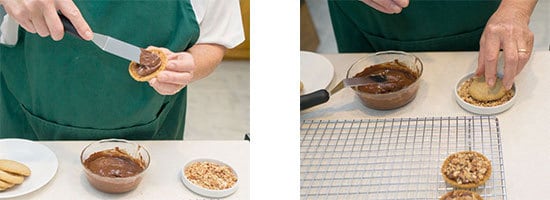
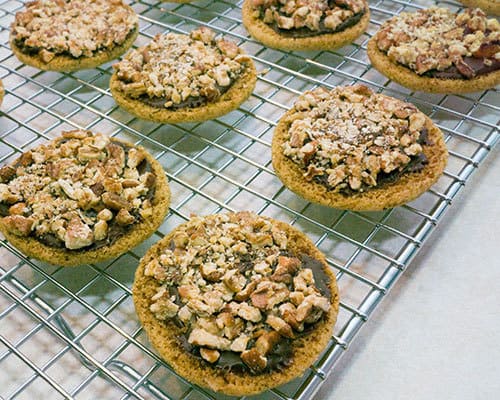
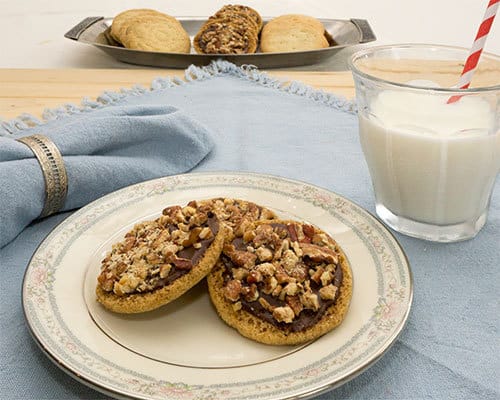
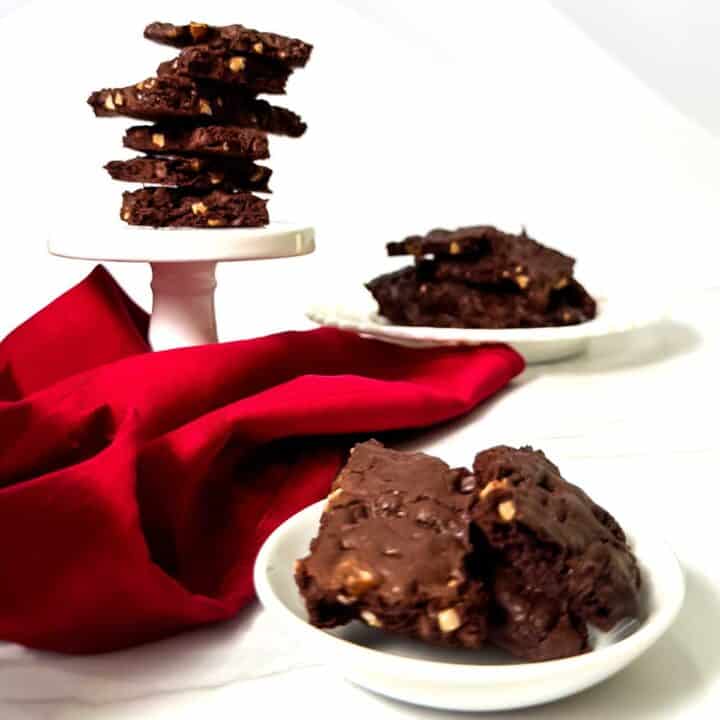
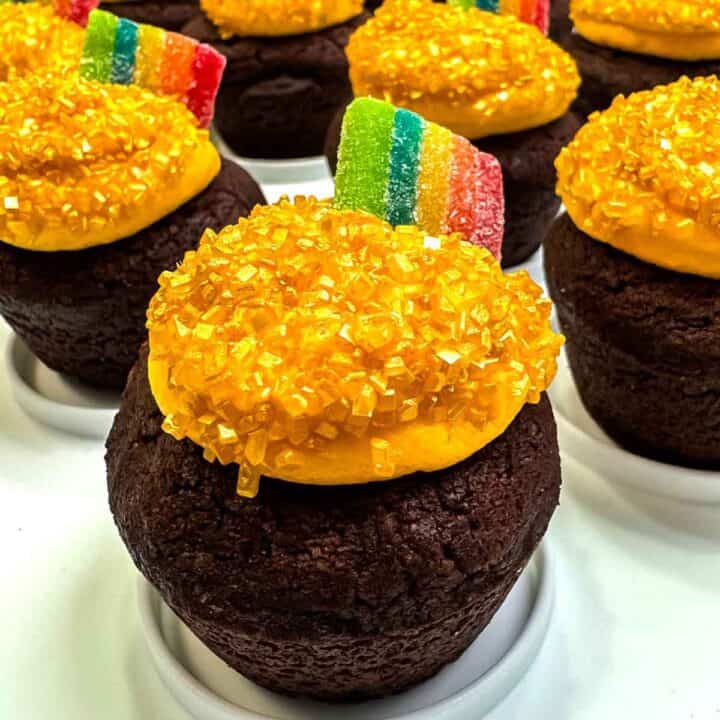
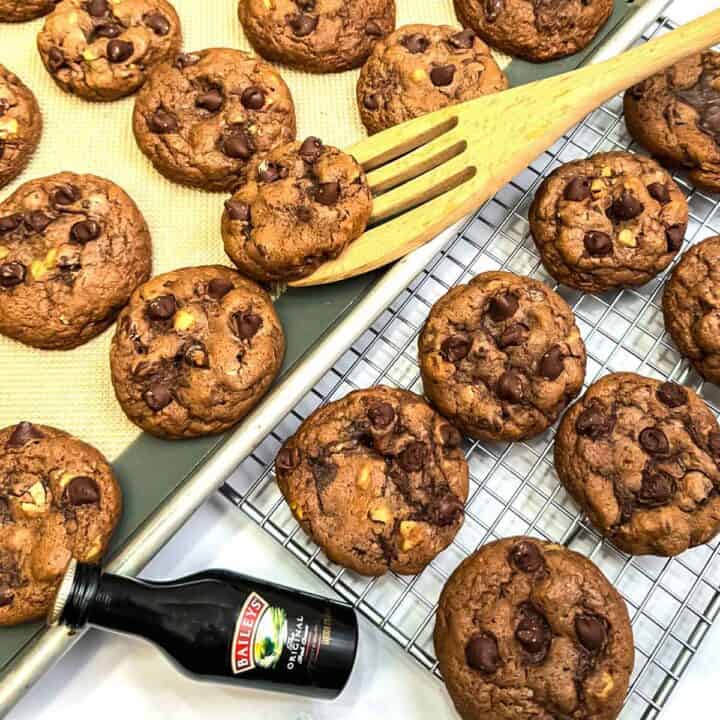

Tracy says
Thank you for doing this. I’m trying to make a crispy chocolate cookie and wasn’t sure how much BA to use. I appreciate the help.